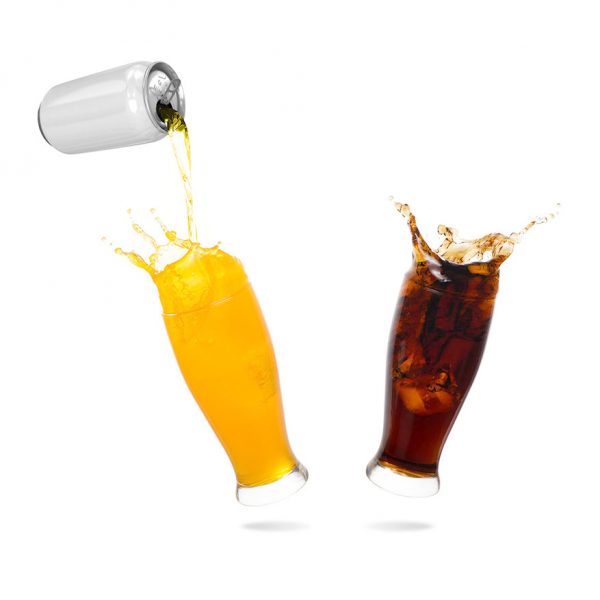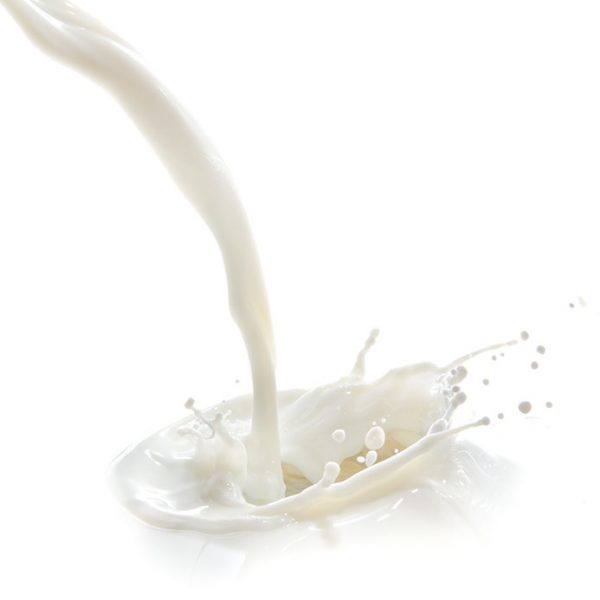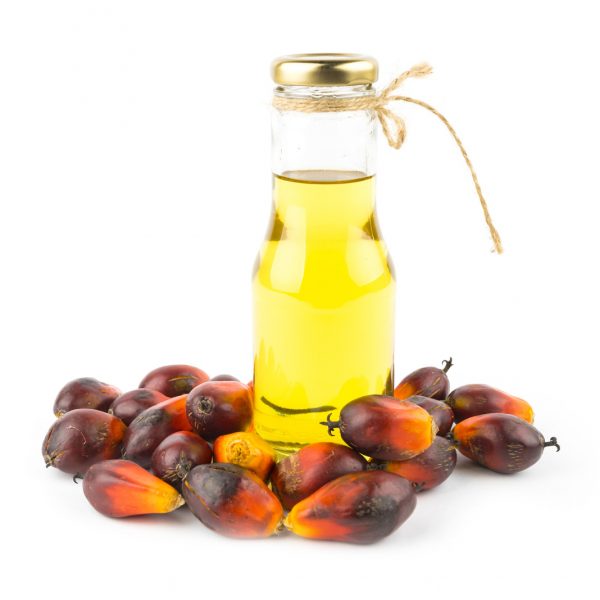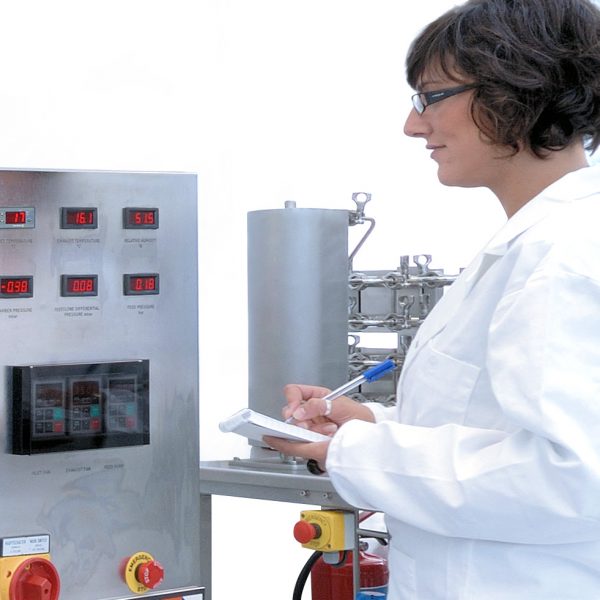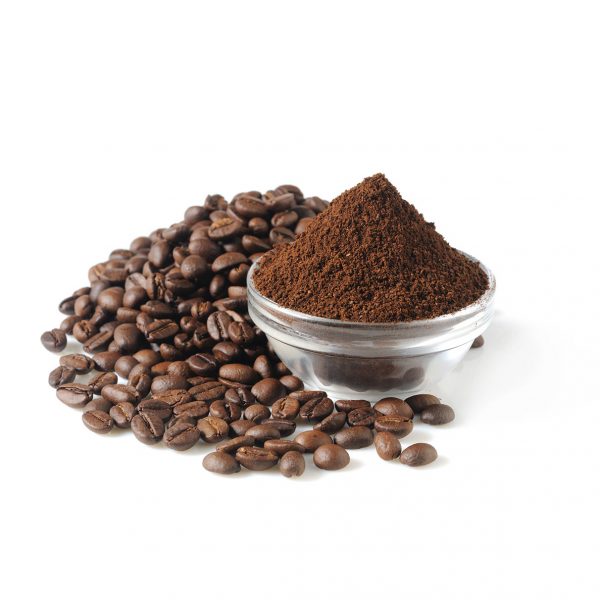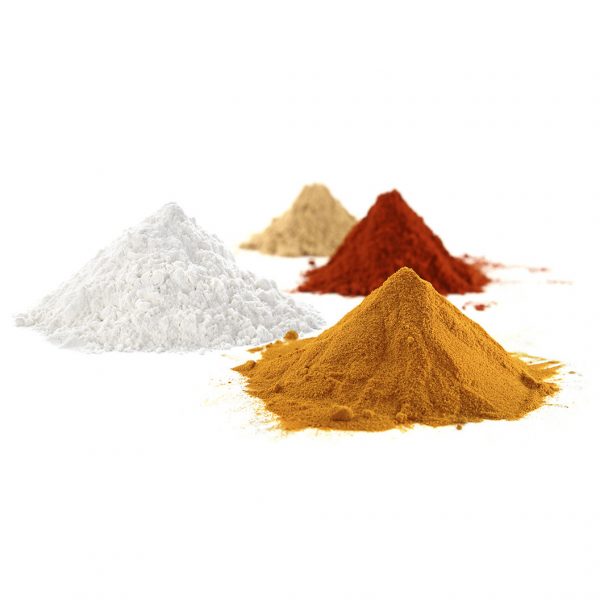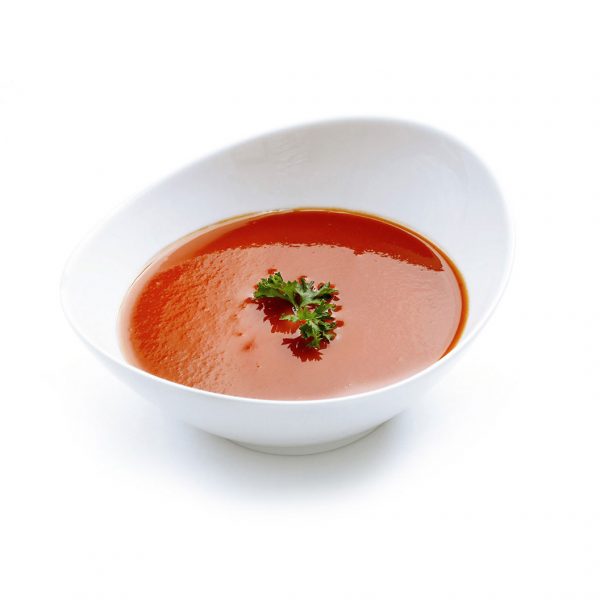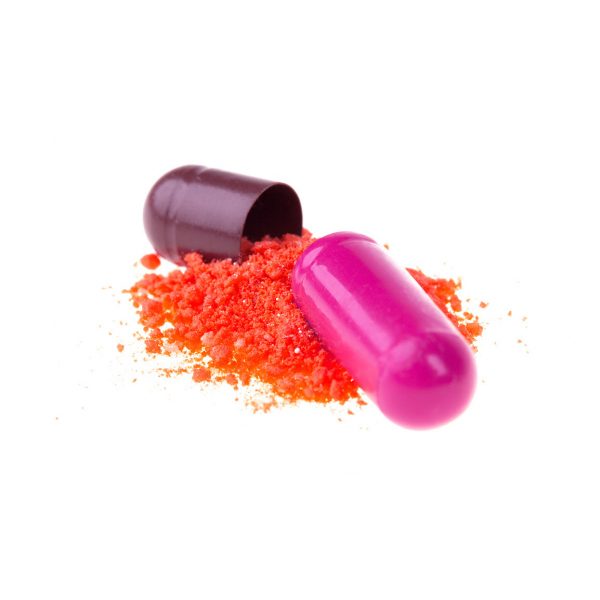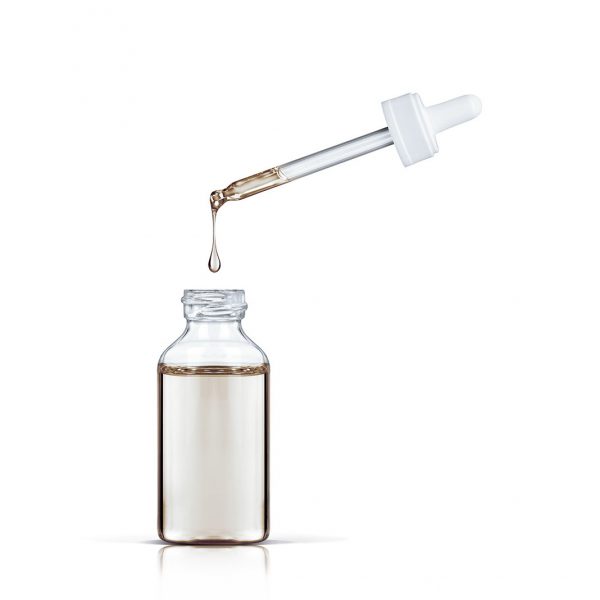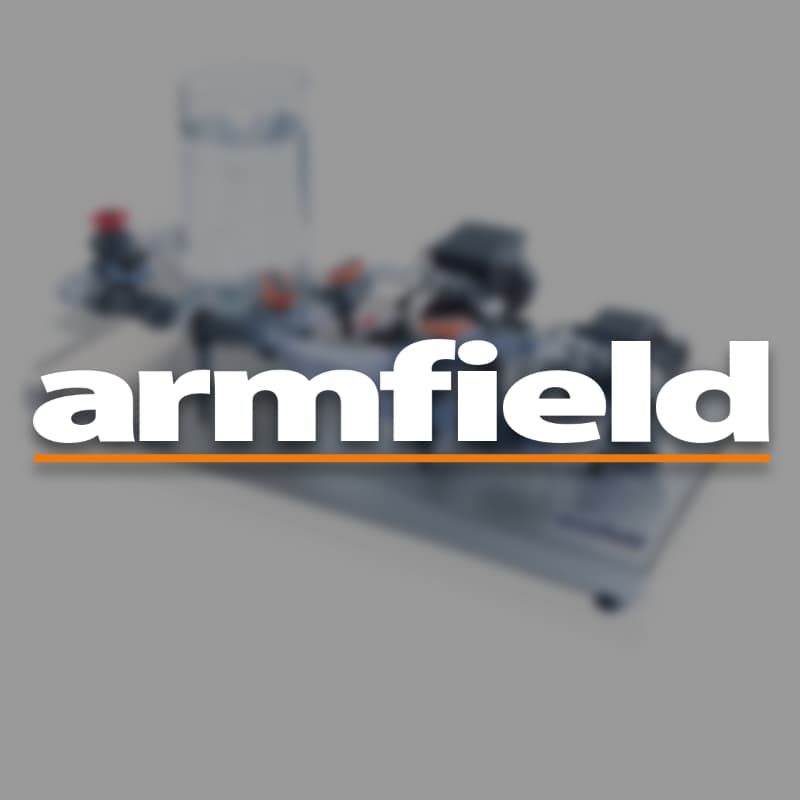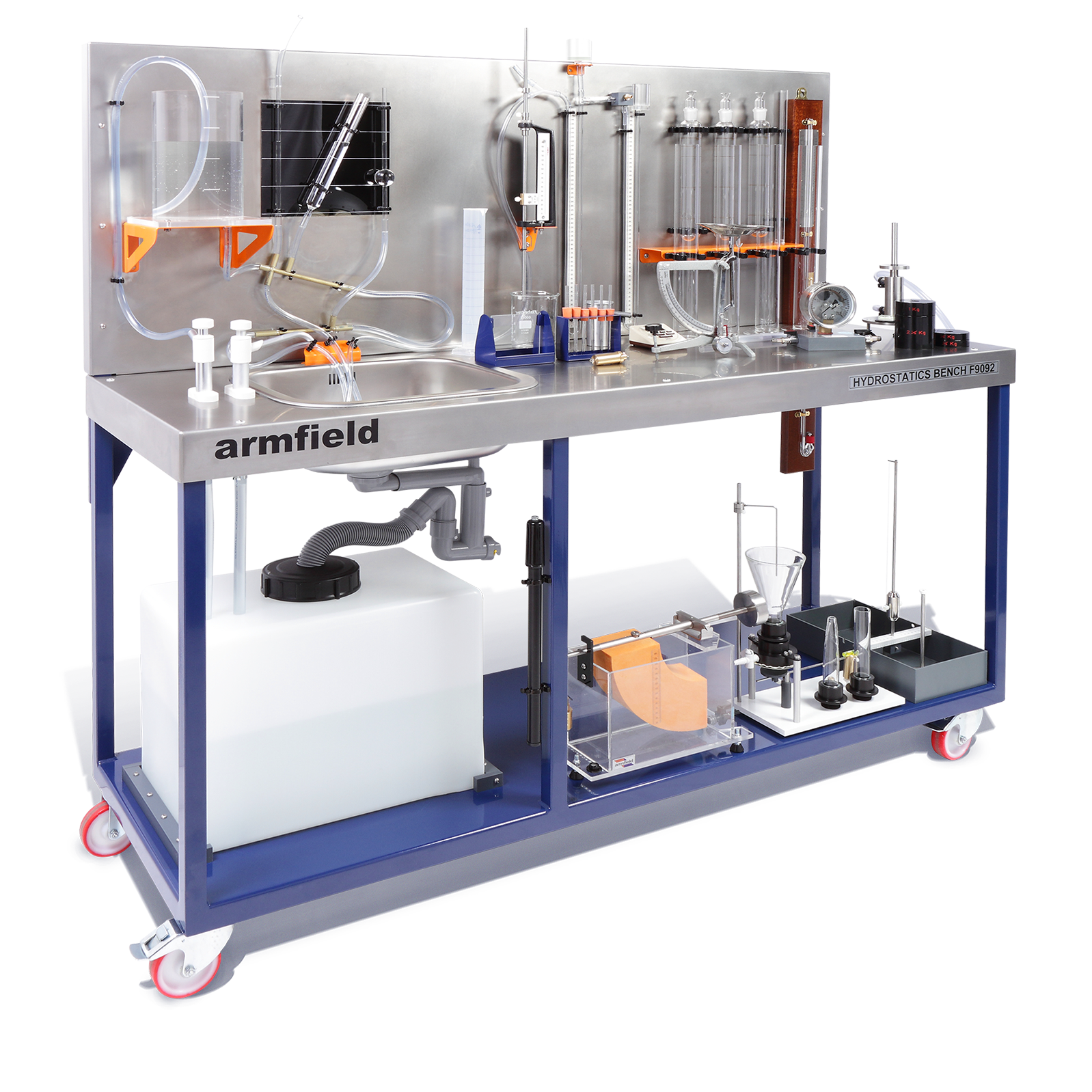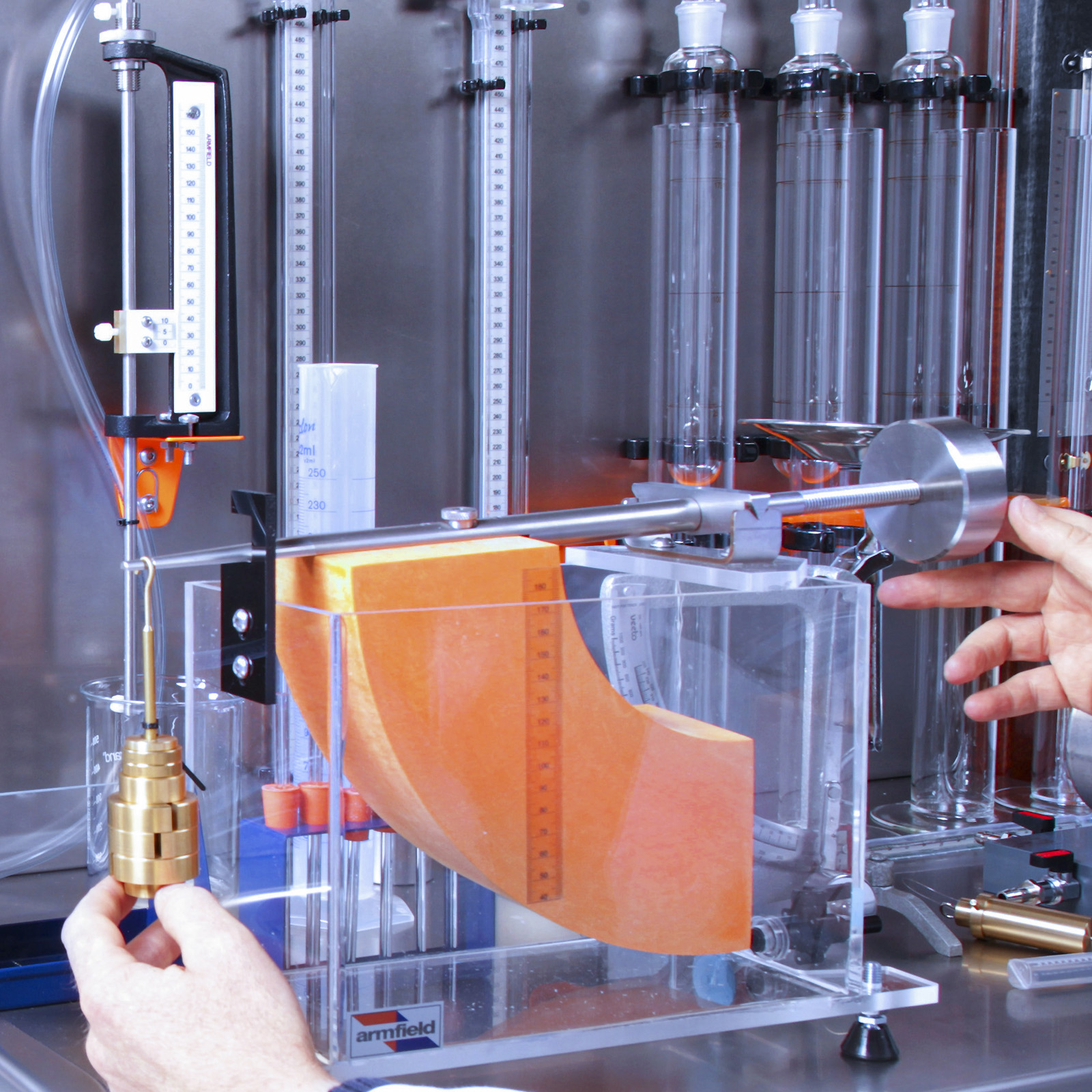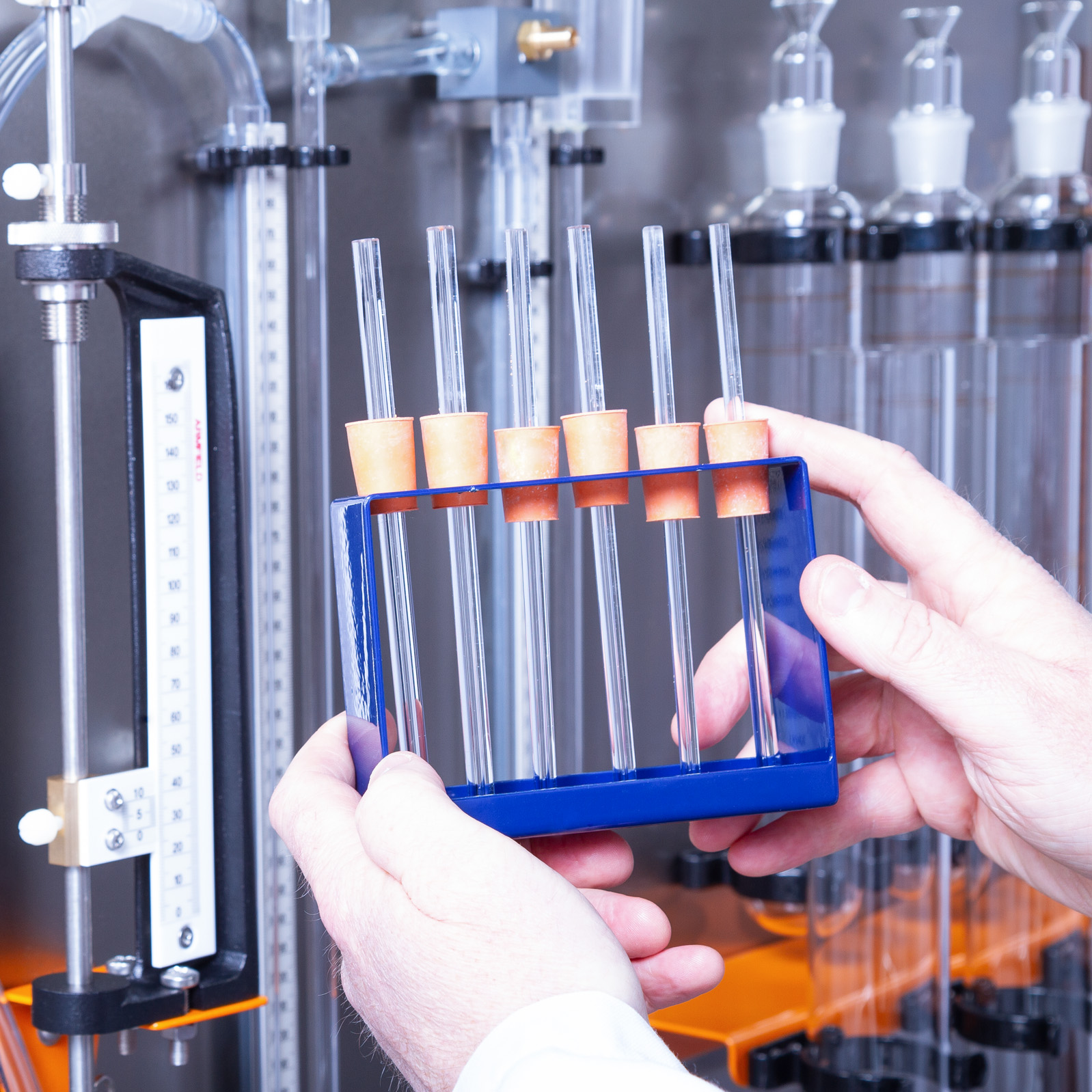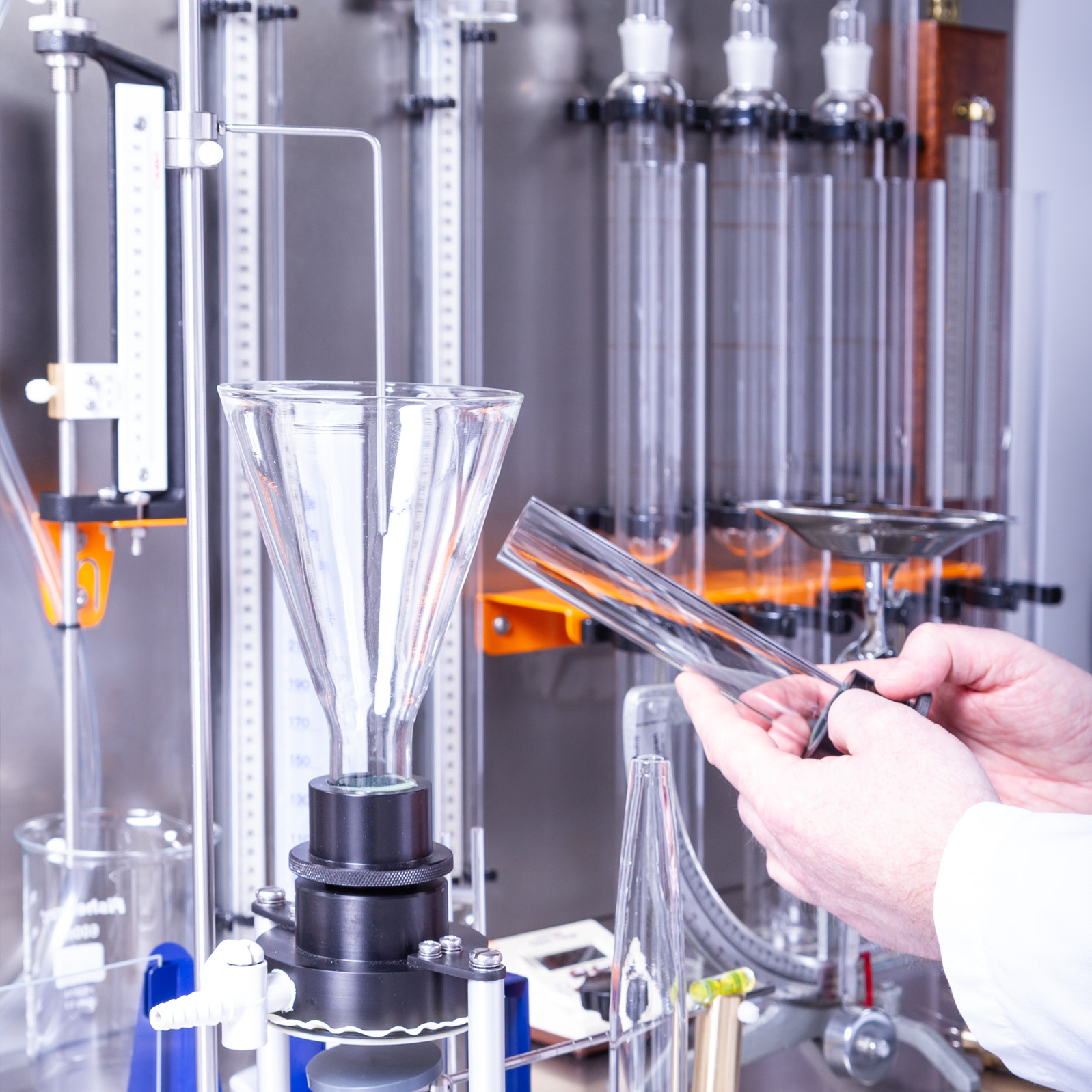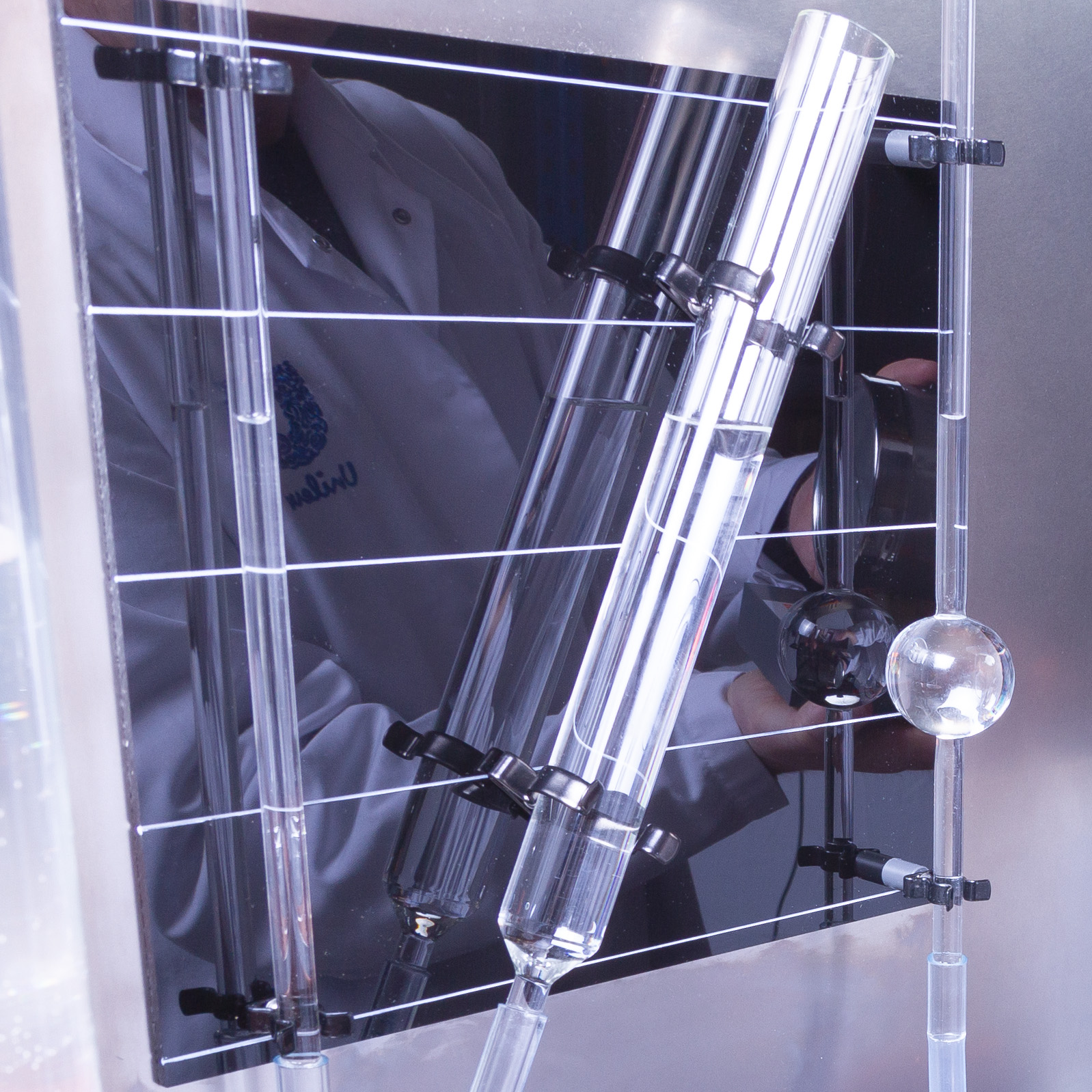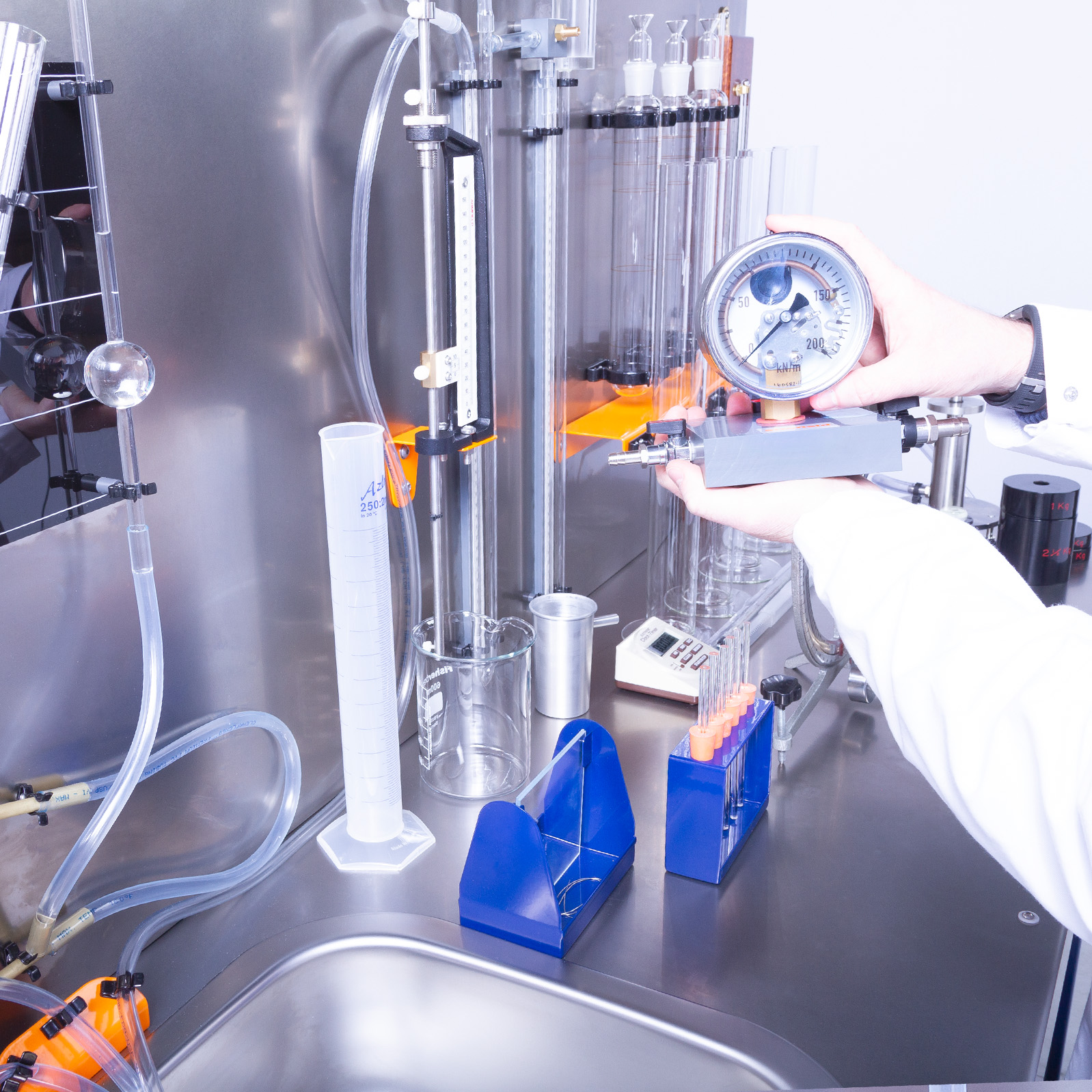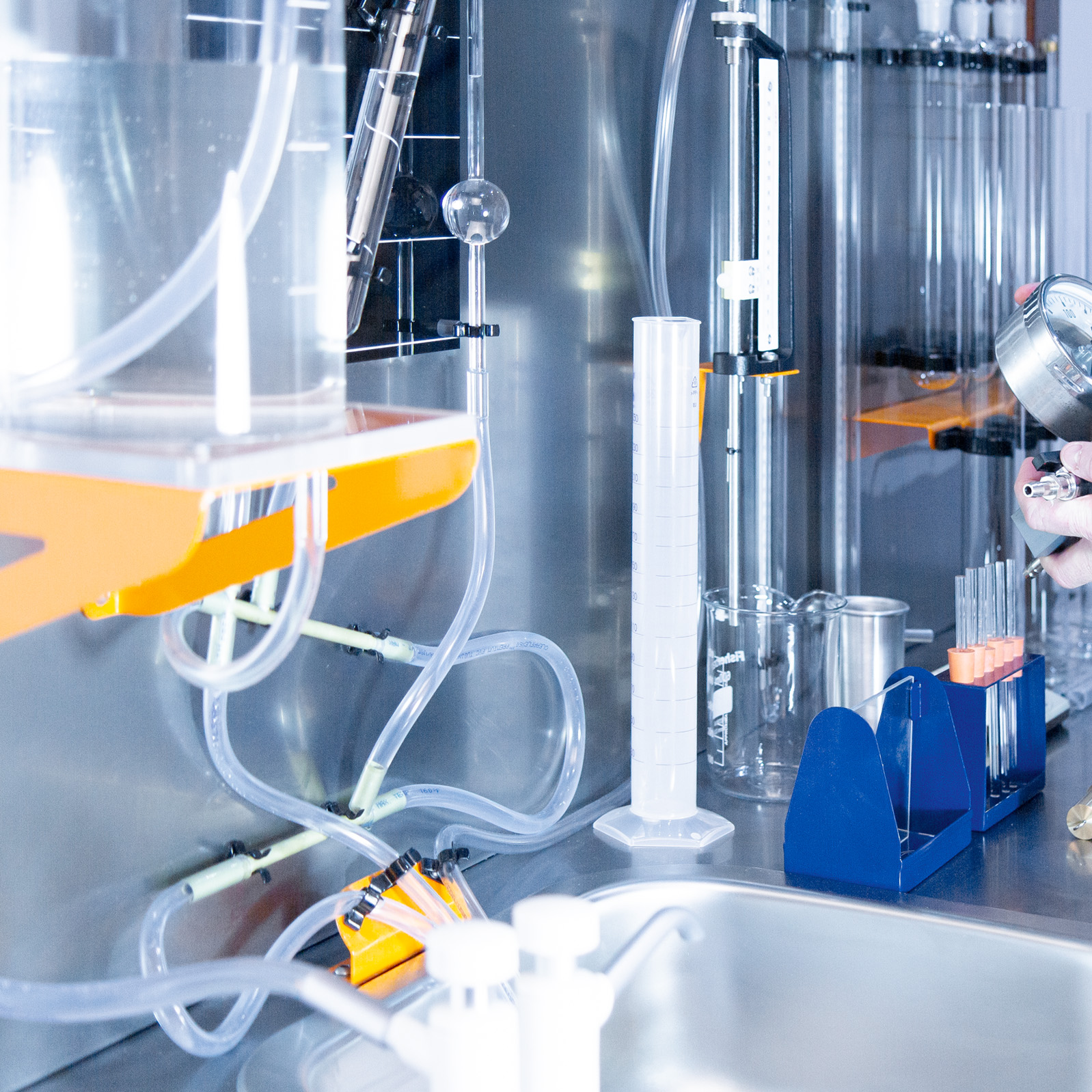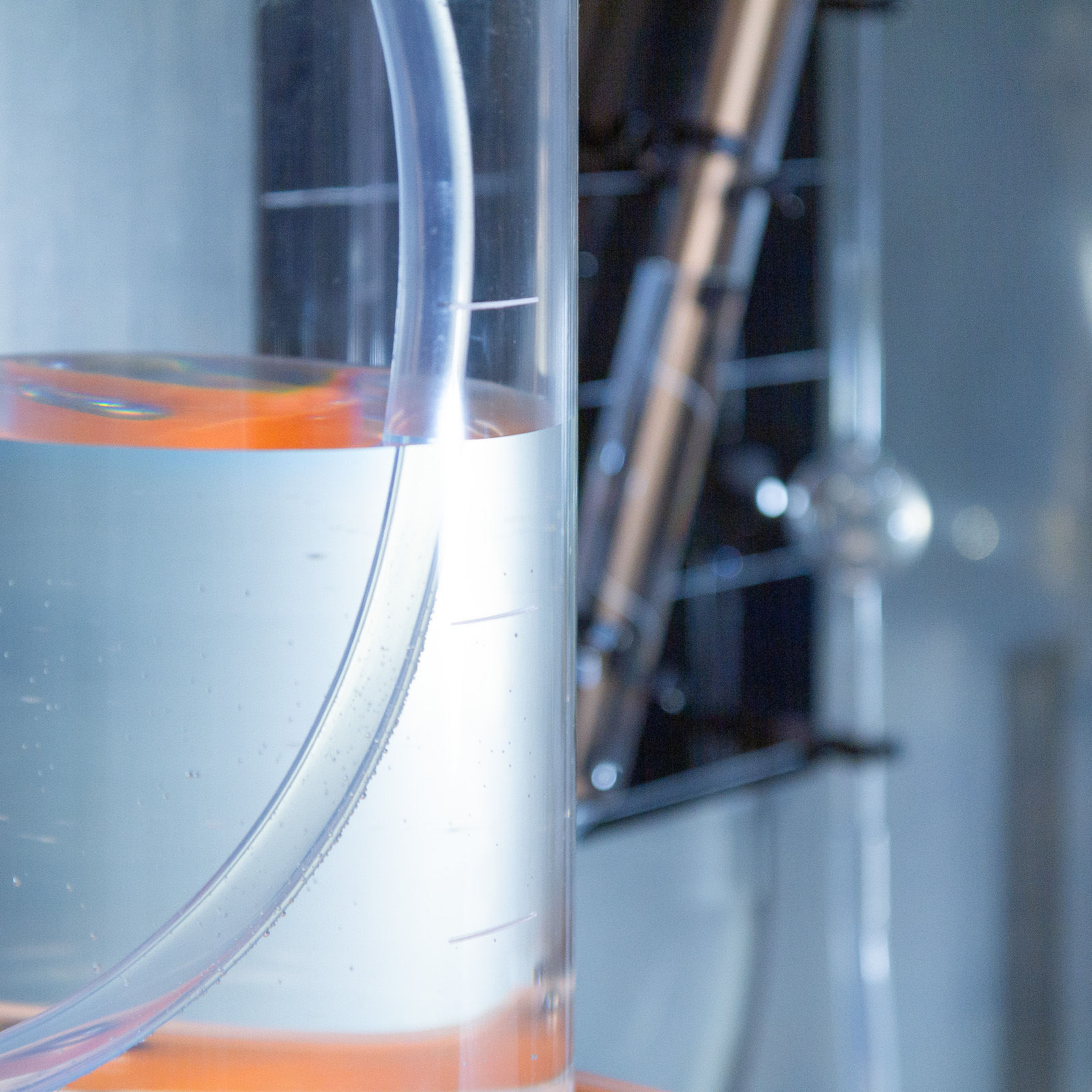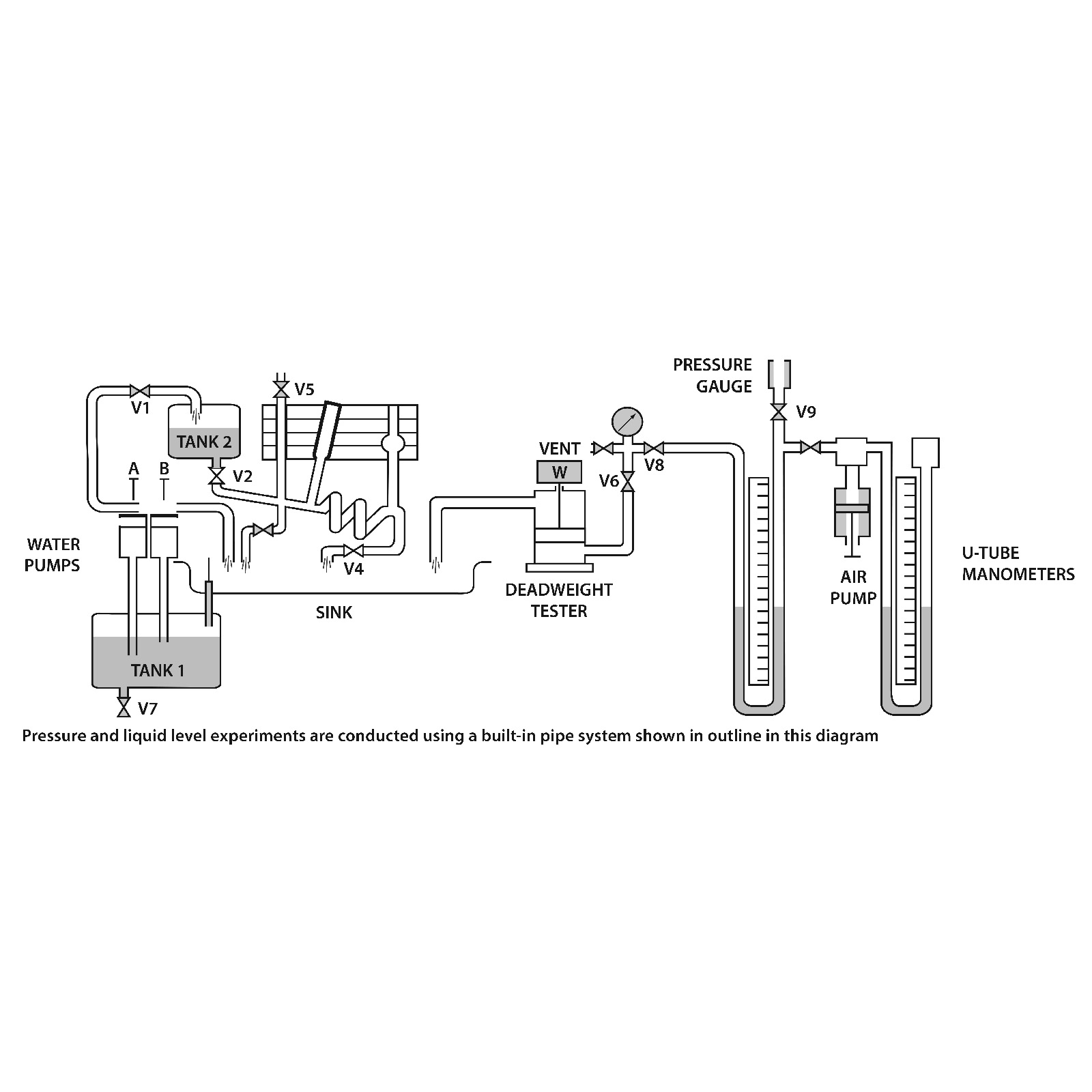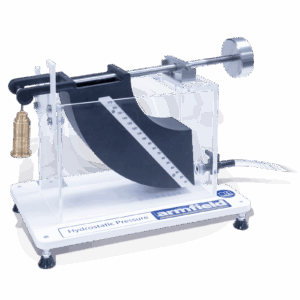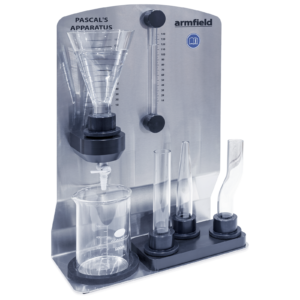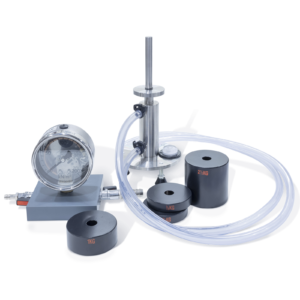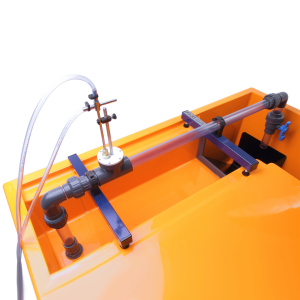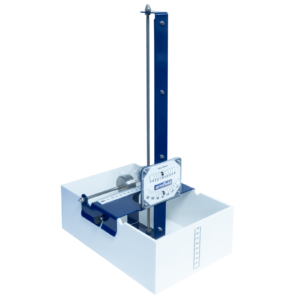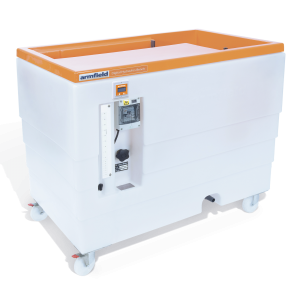F9092 – Fluid Properties & Hydrostatics Bench
The Armfield F9092 Fluid Properties and Hydrostatics Bench is designed to demonstrate the properties of fluids and their behaviour under hydrostatic conditions (fluid at rest).
This enables students to develop an understanding and knowledge of a wide range of fundamental principles and techniques, before studying fluids in motion.
Description
The equipment is mounted on a steel-framed bench fitted with castors. A variety of measuring devices is incorporated either fastened to the back of the bench or free-standing.
Water is stored in a polythene tank situated on the lower shelf of the bench. The water can be transferred by two positive displacement hand pumps, either to an elevated open storage tank connected to a number of glass tubes for free surface studies, or to a plastic sink recessed into the working surface so that benchtop experiments may be conducted without spillage.
All excess water is returned to the storage tank via the sink drain.
The following experimental apparatus is included:
- Universal hydrometer and hydrometer jars
- Falling sphere viscometers
- Free surface tubes
- Hook and point gauge
- Mercury barometer (mercury not supplied)
- Bourdon gauge
- U-tube manometers
- Deadweight pressure gauge calibrator and weights
- Hydrostatic pressure apparatus
- Pascal’s apparatus
- Parallel plate capillary apparatus
- Capillary tube apparatus
- Lever balance with displacement vessel, bucket and cylinder
- Metacentric height apparatus
- Measuring cylinder
- Thermometer
- Air pump
- 600ml beaker
- Stop clock
Technical Specifications
- Universal hydrometer: Range 0.70-2.00 subdivided in 0.01 intervals
- Falling sphere viscometer: 40mm tube diameter
- Hydrostatic pressure apparatus: Comprises ounterbalanced precision quadrant pivoted on knife edges at its centre of arc
- Direct reading barometer: With compensated silvered metal scale. Range 585-790mm subdivided in 1mm intervals. Includes thermometer
- 100mm dial pressure gauge: Range 0-200 kN/m2 (kPa) and equivalent head of water in metres
- Deadweight pressure gauge calibrator: With 2 x 0.5kg, 1kg and 2.5kg weights
- Lever balance: 178mm diameter pan, hook for use in buoyancy experiments, antiparallax cursor, double scale 0-0.25kg and 0-1.00kg
- Thermometer: Range -10˚C to +50˚C
Features & Benefits
- Understanding the properties of fluids:
– Principles and use of a hydrometer
– Measurement of densities and specific gravities
– Measurement of Viscosity
- Understanding the effects of static pressure:
– Observation of effect of capillarity
– Measurement of Capillary elevation
– Demonstrating that the free surface of a static liquid is horizontal
– Studying the effect of flow on a free surface
– Measurement of Liquid Levels using the Hook and point Gauge
– To show that pressure in a liquid varies with the depth and does depend on the shape or area of the vessel
– To determine the hydrostatic thrust acting on a plane surface immersed in water when the surface is partially submerged or fully submerged
– To determine the position of the line of action of the thrust and to compare the position determined by experiment with the theoretical position
- Studying the operation and application of pressure gauges and manometers:
– Using a direct reading mercury barometer to read the barometric or atmospheric pressure (mercury not supplied)
– To calibrate a Bourdon-type pressure gauge using the dead-weight pressure gauge calibrator
– To determine the measurement errors in the reference pressure source used for calibration
– To use a water over mercury ‘U’ tube manometer to determine the pressure at a point
– To compare the reading of a manometer with a Bourdon gauge
– To use an air over mercury ‘U’ tube manometer to determine the pressure at a point
– To use a water over manometer to determine and compare differences in pressures in a water and air system
- Investigating the buoyancy force and stability of floating bodies:
– Show that pressure in a liquid varies with the depth and does depend on the shape or area of the vessel – Verifying Archimedes’ principle
– Stability of a floating body and determination of metacentric height
– Determining the centre of gravity of the pontoon
– Determining the metacentric height and from this the position of the metacentre for the pontoon
– Varying the metacentric height with angle of heel
- The following experimental apparatus is included:
- Universal hydrometer and hydrometer jars
- Falling sphere viscometers
- Free surface tubes
- Hook and point gauge
- Mercury barometer (mercury not supplied)
- Bourdon gauge
- U-tube manometers
- Deadweight pressure gauge calibrator and weights
- Hydrostatic pressure apparatus
- Pascal’s apparatus
- Parallel plate capillary apparatus
- Capillary tube apparatus
- Lever balance with displacement vessel, bucket and cylinder
- Metacentric height apparatus
- Measuring cylinder
- Thermometer
- Air pump
- 600ml beaker
- Stop clock

H12-8: Basic Portable Pressure Meter
Consequent to its hazardous nature many technicians prefer not to use mercury or its use may be prohibited in the laboratory.
In any case Armfield is unable to include it in the supply with the purchase of mercury manometers due to shipping restrictions.
With this in mind Armfield offers a handheld, portable, battery-operated pressure meter (H12-8), which is capable of measuring pressures of air or water from 0-2,000mBar (0-1,500mm Hg).
- Fill with clean water.
- No permanent connection required.
PACKED AND CRATED SHIPPING SPECIFICATIONS
Volume: 2.7m³
Gross Weight: 270Kg
Height: 1.45m
Width: 1.83m
Depth: 0.61m
- F9092
